Abstract
Exposure of mice to UVB (280-320 nm) ultraviolet radiation reduces contact hypersensitivity (CHS) reactions to chemicals that are applied subsequently to unirradiated skin. It also decreases the number and alters the morphology of Langerhans cells at the site of irradiation. We addressed the question of whether the systemic suppression of CHS was related to these modifications of Langerhans cells by UVB radiation. In mice treated on the dorsum with UVB radiation, the number and morphology of Langerhans cells in the unexposed areas of skin used for inducing and eliciting CHS appeared normal. Therefore, the depression of CHS could not be attributed to a depletion of Langerhans cells at the sites of application of the sensitizing agent. We also examined the correlation between alterations in Langerhans cells and systemic suppression of CHS after treatment with various types of nonionizing radiation. Treatment of mice with UVA (320-400 nm) radiation eliminated detectable Langerhans cells from the exposed skin, based on ATPase staining and electron microscopy, but did not reduce CHS; in fact, CHS was enhanced in these animals. Neither rose bengal nor eosin, in combination with visible (greater than 400 nm) radiation, affected the number or appearance of Langerhans cells, even though microscopic evidence of phototoxicity was present. However, rose bengal plus visible radiation depressed CHS reactions that were induced and elicited through unexposed skin. Depletion of Langerhans cells from dorsal skin by exposure to UVA radiation did not prevent suppression of CHS by subsequent exposure of the Langerhans cell-depleted skin to UVB radiation. We conclude that systemic suppression of CHS by UVB irradiation is not related to the numerical and morphological alterations in Langerhans cells that occur locally at the site of irradiation.
Full text
PDF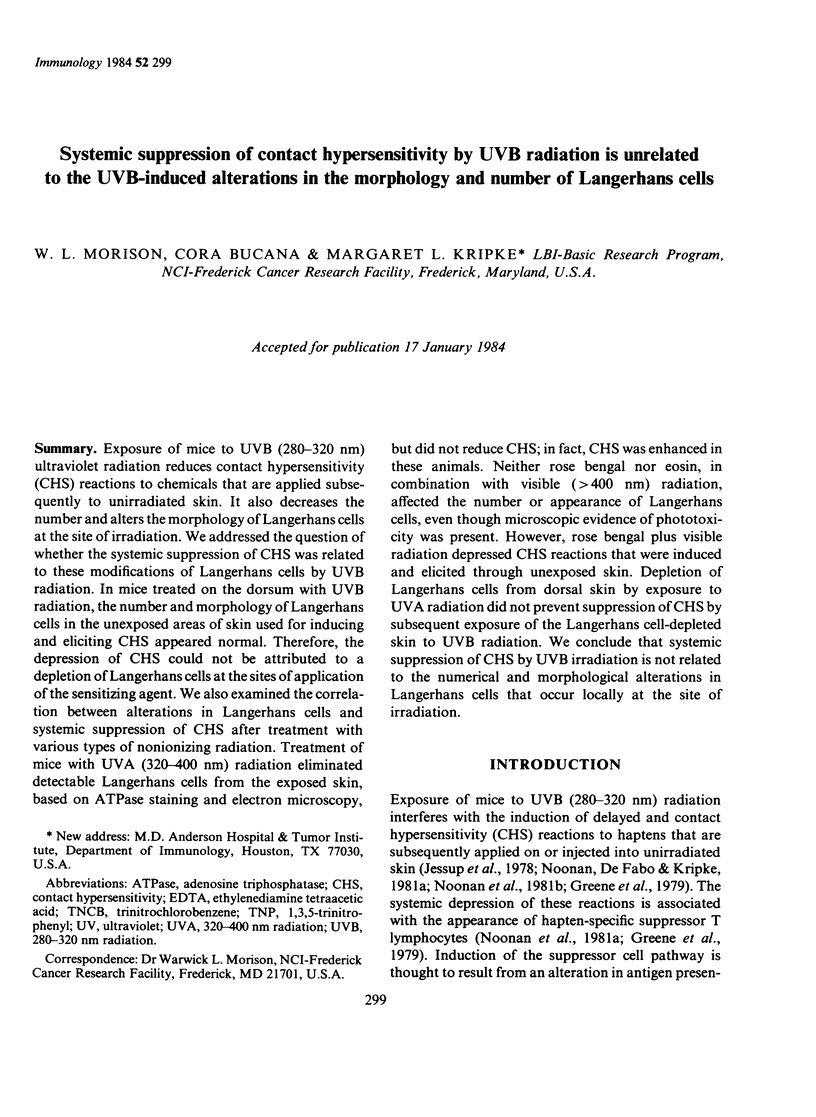
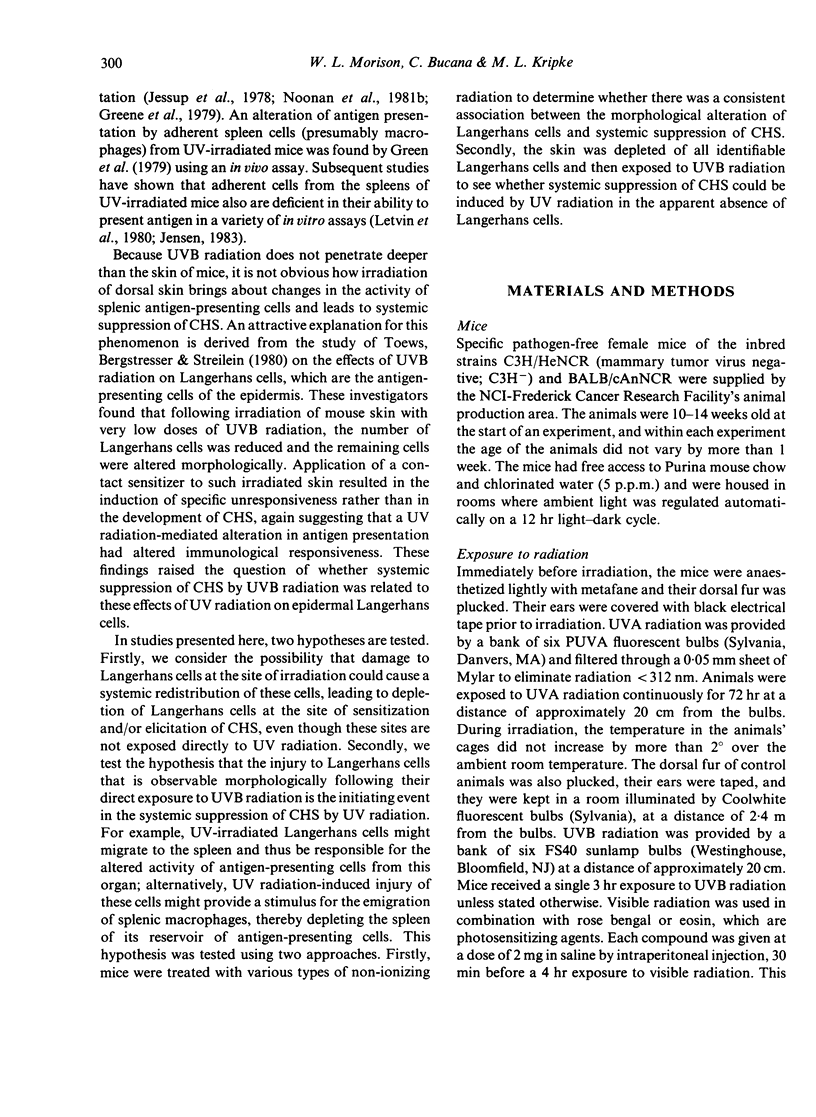
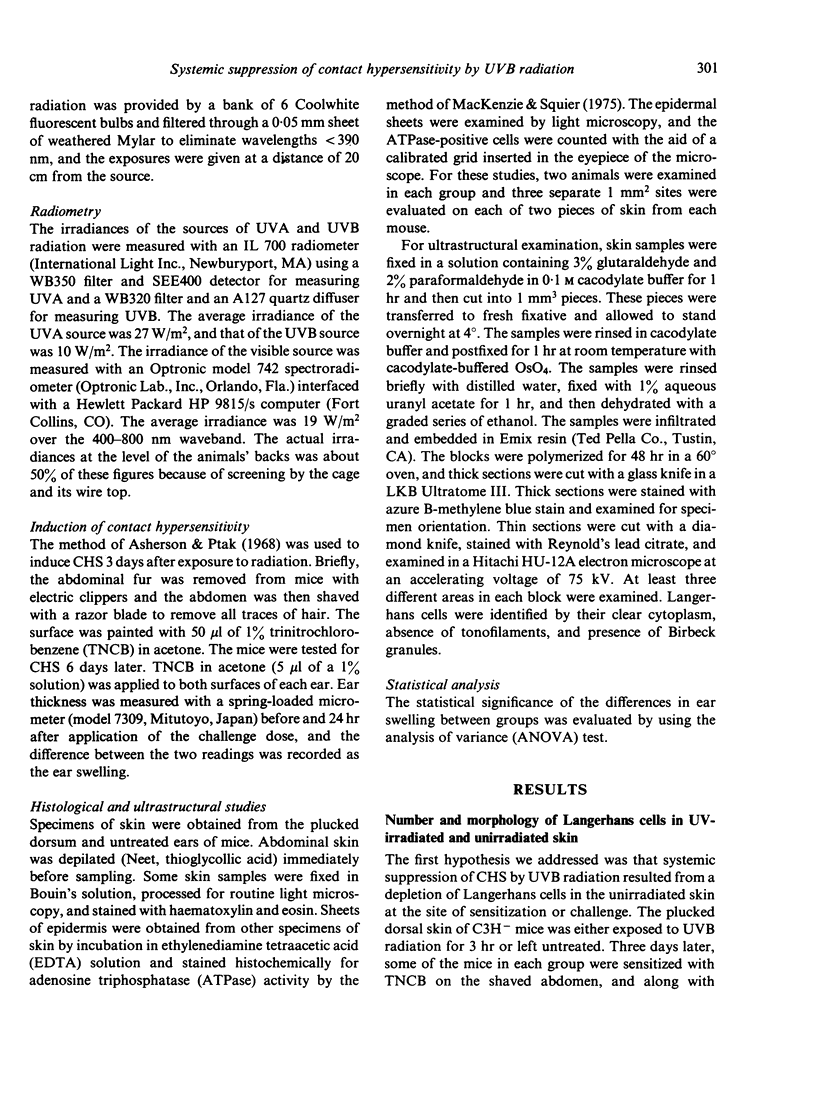
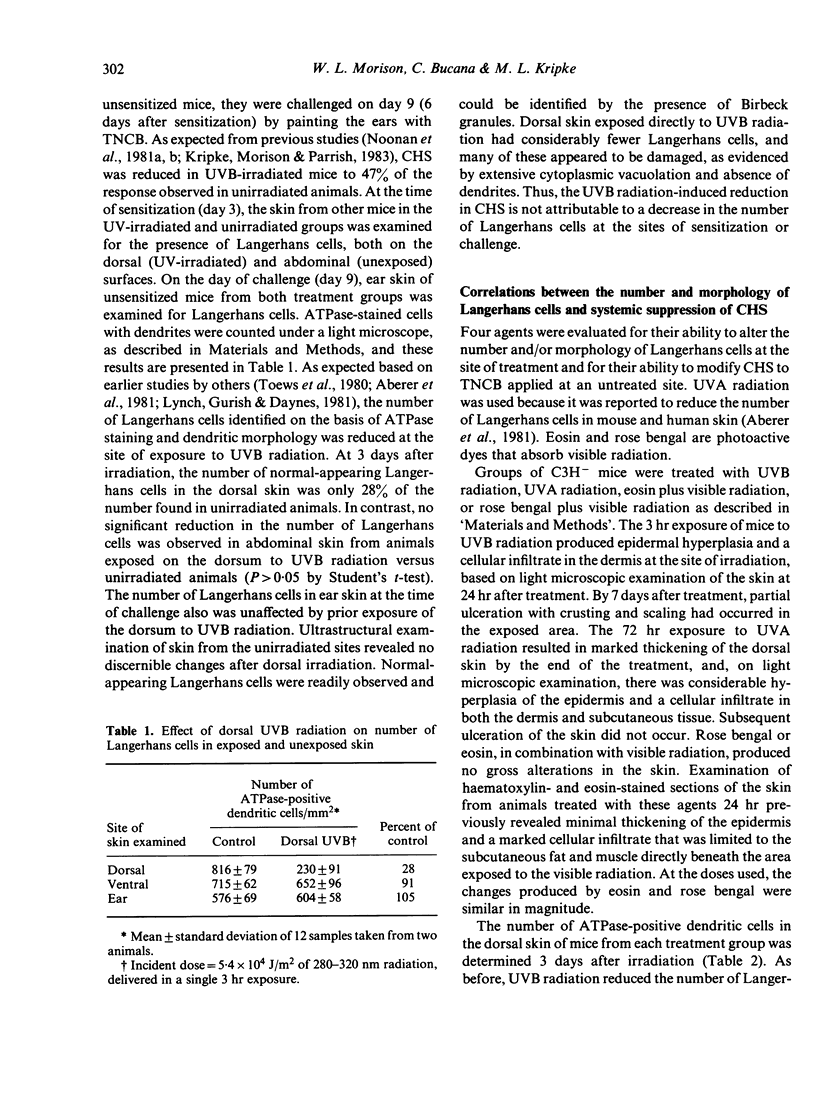
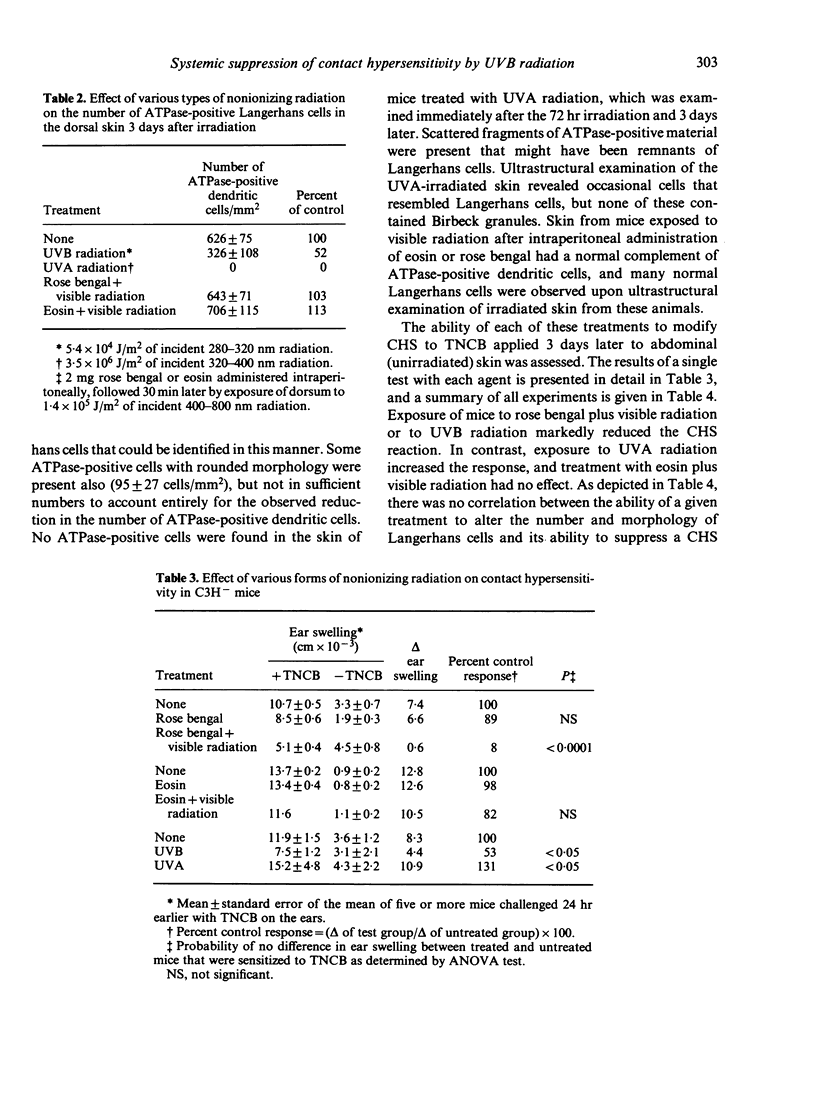
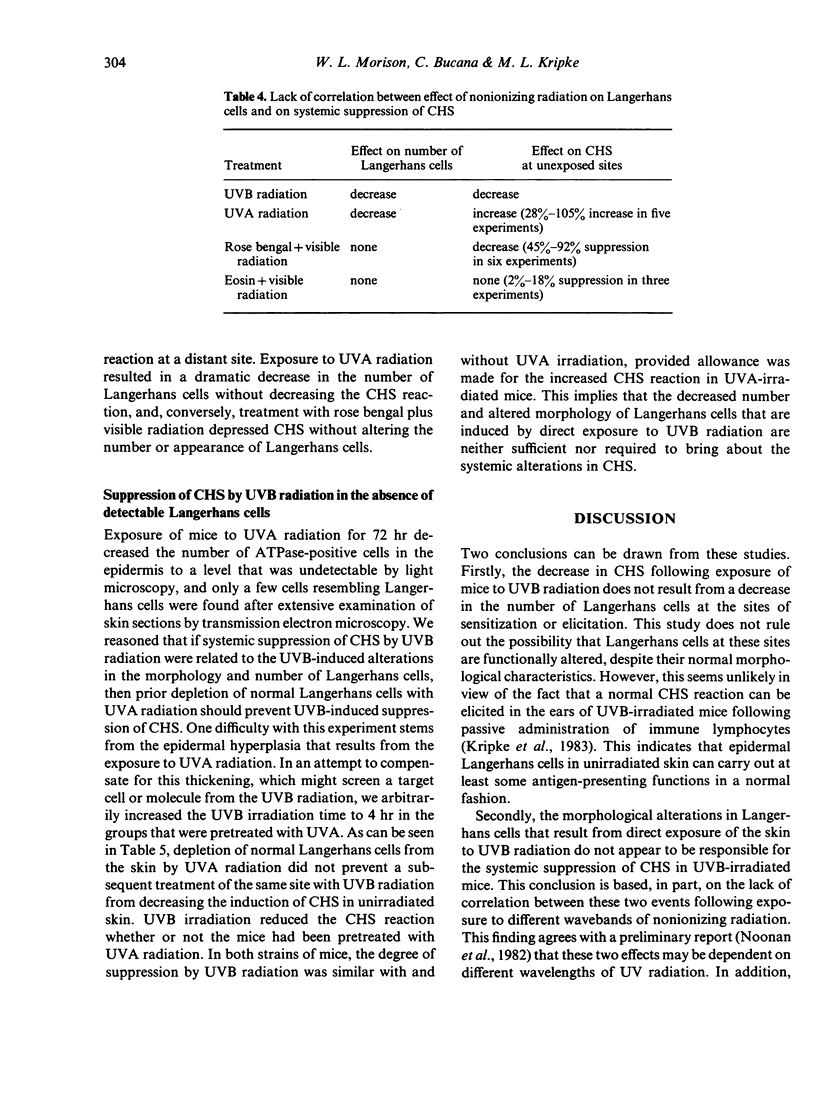
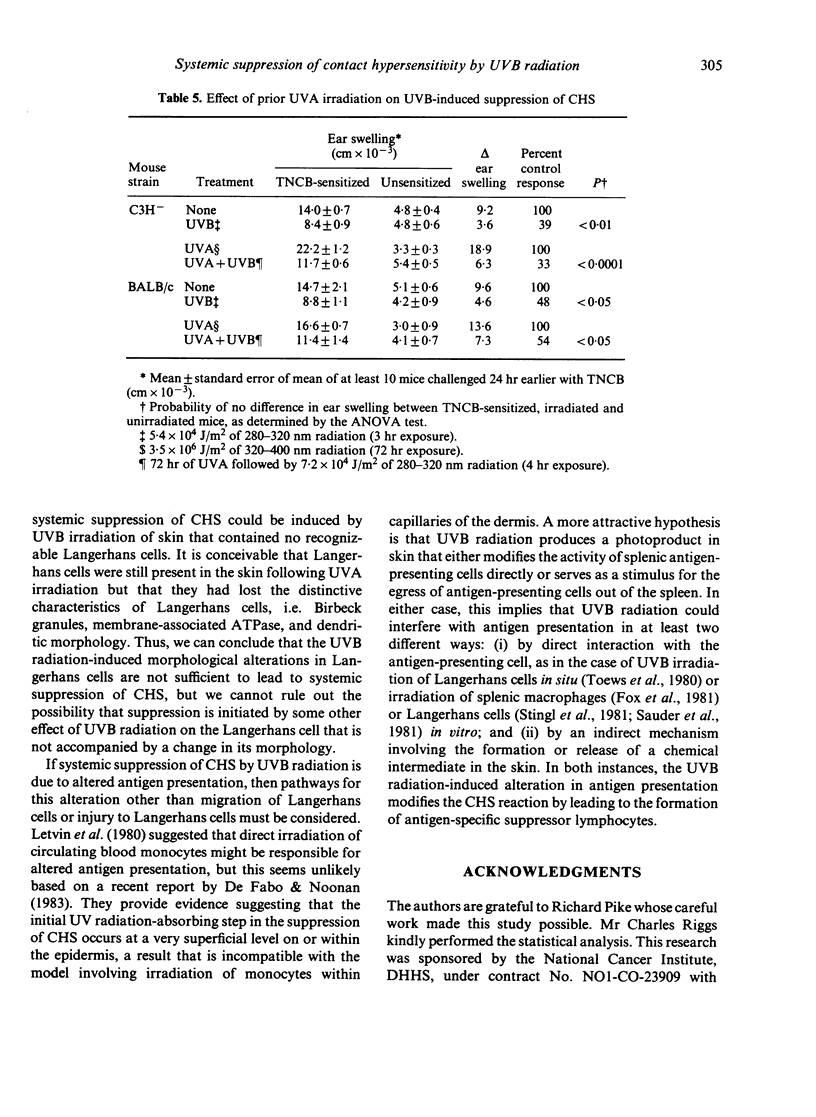
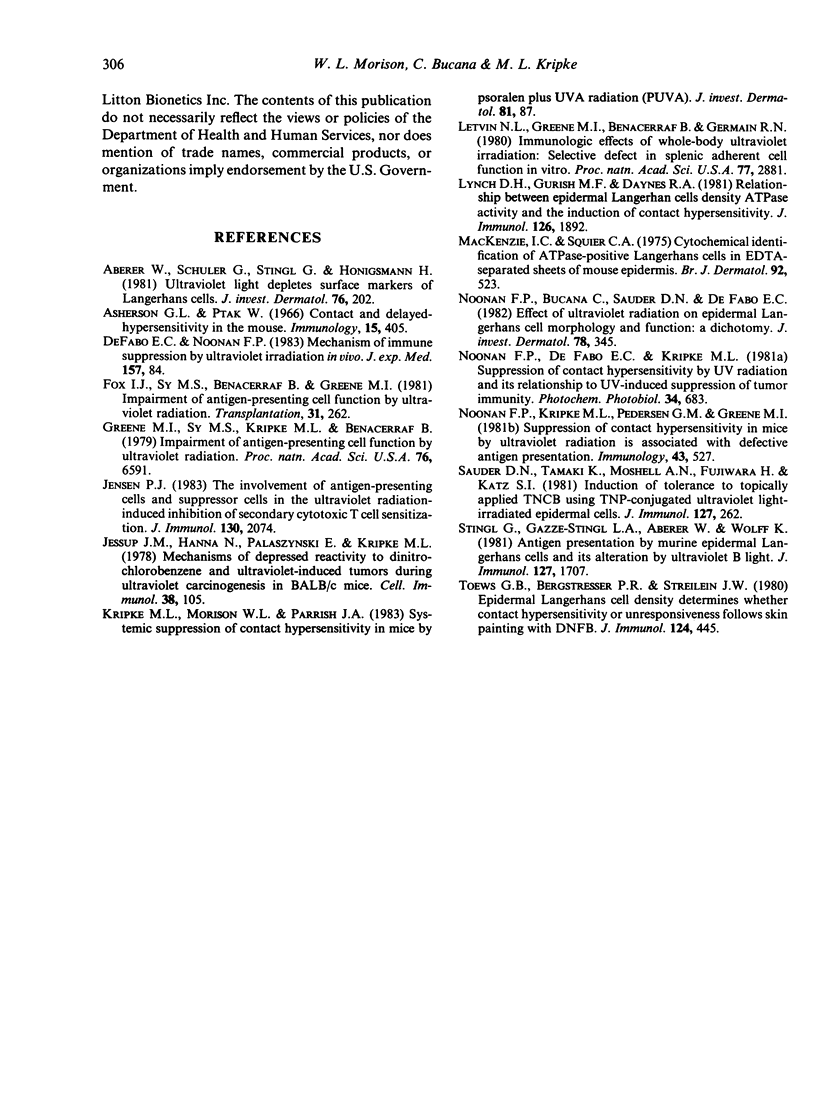
Selected References
These references are in PubMed. This may not be the complete list of references from this article.
- Aberer W., Schuler G., Stingl G., Hönigsmann H., Wolff K. Ultraviolet light depletes surface markers of Langerhans cells. J Invest Dermatol. 1981 Mar;76(3):202–210. doi: 10.1111/1523-1747.ep12525745. [DOI] [PubMed] [Google Scholar]
- Asherson G. L., Ptak W. Contact and delayed hypersensitivity in the mouse. I. Active sensitization and passive transfer. Immunology. 1968 Sep;15(3):405–416. [PMC free article] [PubMed] [Google Scholar]
- De Fabo E. C., Noonan F. P. Mechanism of immune suppression by ultraviolet irradiation in vivo. I. Evidence for the existence of a unique photoreceptor in skin and its role in photoimmunology. J Exp Med. 1983 Jul 1;158(1):84–98. doi: 10.1084/jem.158.1.84. [DOI] [PMC free article] [PubMed] [Google Scholar]
- Fox I. J., Sy M. S., Benacerraf B., Greene M. I. Impairment of antigen-presenting cell function by ultraviolet radiation. II. Effect of in vitro ultraviolet irradiation on antigen-presenting cells. Transplantation. 1981 Apr;31(4):262–265. doi: 10.1097/00007890-198104000-00006. [DOI] [PubMed] [Google Scholar]
- Greene M. I., Sy M. S., Kripke M., Benacerraf B. Impairment of antigen-presenting cell function by ultraviolet radiation. Proc Natl Acad Sci U S A. 1979 Dec;76(12):6591–6595. doi: 10.1073/pnas.76.12.6591. [DOI] [PMC free article] [PubMed] [Google Scholar]
- Jensen P. J. The involvement of antigen-presenting cells and suppressor cells in the ultraviolet radiation-induced inhibition of secondary cytotoxic T cell sensitization. J Immunol. 1983 May;130(5):2071–2074. [PubMed] [Google Scholar]
- Jessup J. M., Hanna N., Palaszynski E., Kripke M. L. Mechanisms of depressed reactivity to dinitrochlorobenzene and ultraviolet-induced tumors during ultraviolet carcinogenesis in BALB/c mice. Cell Immunol. 1978 Jun;38(1):105–115. doi: 10.1016/0008-8749(78)90036-9. [DOI] [PubMed] [Google Scholar]
- Kripke M. L., Morison W. L., Parrish J. A. Systemic suppression of contact hypersensitivity in mice by psoralen plus UVA radiation (PUVA). J Invest Dermatol. 1983 Aug;81(2):87–92. doi: 10.1111/1523-1747.ep12542071. [DOI] [PubMed] [Google Scholar]
- Letvin N. L., Greene M. I., Benacerraf B., Germain R. N. Immunologic effects of whole-body ultraviolet irradiation: selective defect in splenic adherent cell function in vitro. Proc Natl Acad Sci U S A. 1980 May;77(5):2881–2885. doi: 10.1073/pnas.77.5.2881. [DOI] [PMC free article] [PubMed] [Google Scholar]
- Lynch D. H., Gurish M. F., Daynes R. A. Relationship between epidermal Langerhans cell density ATPase activity and the induction of contact hypersensitivity. J Immunol. 1981 May;126(5):1892–1897. [PubMed] [Google Scholar]
- Mackenzie I. C., Squier C. A. Cytochemical identification of ATPase-positive langerhans cells in EDTA-separated sheets of mouse epidermis. Br J Dermatol. 1975 May;92(5):523–533. doi: 10.1111/j.1365-2133.1975.tb03120.x. [DOI] [PubMed] [Google Scholar]
- Noonan F. P., De Fabo E. C., Kripke M. L. Suppression of contact hypersensitivity by UV radiation and its relationship to UV-induced suppression of tumor immunity. Photochem Photobiol. 1981 Dec;34(6):683–689. [PubMed] [Google Scholar]
- Noonan F. P., Kripke M. L., Pedersen G. M., Greene M. I. Suppression of contact hypersensitivity in mice by ultraviolet irradiation is associated with defective antigen presentation. Immunology. 1981 Jul;43(3):527–533. [PMC free article] [PubMed] [Google Scholar]
- Stingl G., Gazze-Stingl L. A., Aberer W., Wolff K. Antigen presentation by murine epidermal langerhans cells and its alteration by ultraviolet B light. J Immunol. 1981 Oct;127(4):1707–1713. [PubMed] [Google Scholar]
- Toews G. B., Bergstresser P. R., Streilein J. W. Epidermal Langerhans cell density determines whether contact hypersensitivity or unresponsiveness follows skin painting with DNFB. J Immunol. 1980 Jan;124(1):445–453. [PubMed] [Google Scholar]


